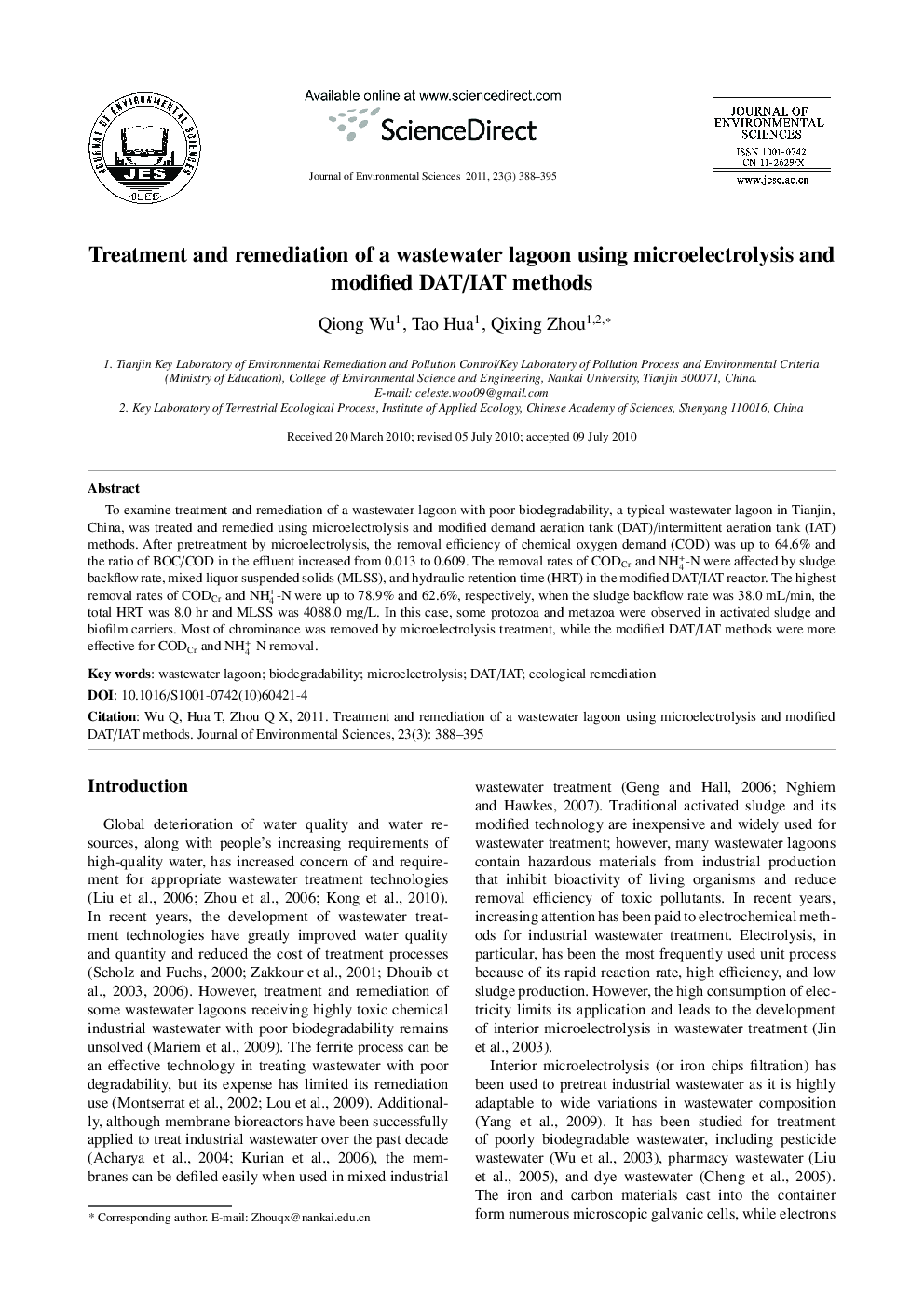| Article ID | Journal | Published Year | Pages | File Type |
|---|---|---|---|---|
| 4455514 | Journal of Environmental Sciences | 2011 | 8 Pages |
To examine treatment and remediation of a wastewater lagoon with poor biodegradability, a typical wastewater lagoon in Tianjin, China, was treated and remedied using microelectrolysis and modified demand aeration tank (DAT)/intermittent aeration tank (IAT) methods. After pretreatment by microelectrolysis, the removal efficiency of chemical oxygen demand (COD) was up to 64.6% and the ratio of BOC/COD in the effluent increased from 0.013 to 0.609. The removal rates of CODCr and NH4+-N were affected by sludge backflow rate, mixed liquor suspended solids (MLSS), and hydraulic retention time (HRT) in the modified DAT/IAT reactor. The highest removal rates of CODCr and NH4+-N were up to 78.9% and 62.6%, respectively, when the sludge backflow rate was 38.0 mL/min, the total HRT was 8.0 hr and MLSS was 4088.0 mg/L. In this case, some protozoa and metazoa were observed in activated sludge and biofilm carriers. Most of chrominance was removed by microelectrolysis treatment, while the modified DAT/IAT methods were more effective for CODCr and NH4+-N removal.
